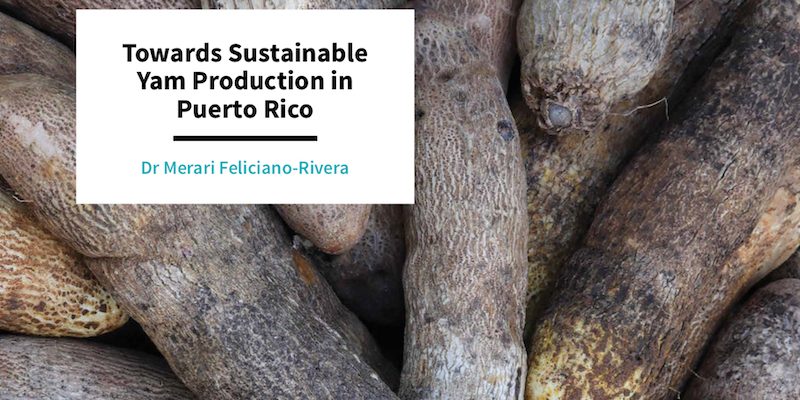Artículo reseñando labor de la Dra. Merari Feliciano y su equipo de trabajo con La producción de ñame!
Yams provide a staple food source in Puerto Rico, supplying an essential source of nutrients and fibre. However, pests and disease have been severely diminishing local yields. To tackle this problem, Dr Merari Feliciano-Riveraand her team at the University of Puerto Rico are working to characterise the causal agents, provide management techniques and improve seed production practices towards sustainable yam production.
In the 80s, yam was considered the most important root crop in Puerto Rico and was highly profitable for farmers. Since then, the industry has been declining due to several factors, including foliar and tuber diseases, cheap imports, natural disasters and high production costs. Yam production decreased by two and a half times over just a thirty-year period.
Yams are considered a staple food in tropical and subtropical regions, following only potatoes and cassava as the most important starchy root crop worldwide. They provide a rich source of vitamin C, potassium, manganese and fibre and are low in cholesterol. In Puerto Rico, the most cultivated yams species include Dioscorea alata and Dioscorea rotundata.
Yam seeds are scarce and expensive, especially when sourcing a good quality crop. The plant is also affected by many pests and diseases, including soil pests such as white worm and nematodes – the main drivers of yam decimation in Puerto Rico. No nematicides are registered for use on tubers; dry rot takes over, severely diminishing harvests. Nematodes belonging to the Pratylenchus and Scutellonema families are the main causal agents in Puerto Rico.
Dioscorea rotundata is particularly susceptible to internal dry rot, which causes its tubers to harden, dry out and decay during storage, allowing subsequent invasion by a plethora of fungal species. Internal dry rot differs from dry rot in that it is caused by fungi rather than nematodes, and affects yams during storage, rather than both in the field and through storage. This disease has direct impacts on seed quality and causes yield losses of up to 98%. Across the globe, internal dry rot has been reported to be caused by infestations of Penicillium, Fusarium and Rhizoctonia fungi.
To determine preventative measures, identifying the most dominant local effector is vital. The application of fungicides before storage and planting has previously been proven to improve yam quality. ‘Oxamyl L’ used to be the go-to dry rot diminisher, however, this product is no longer registered for use on tubers in Puerto Rico, and is currently only registered for foliar application.








